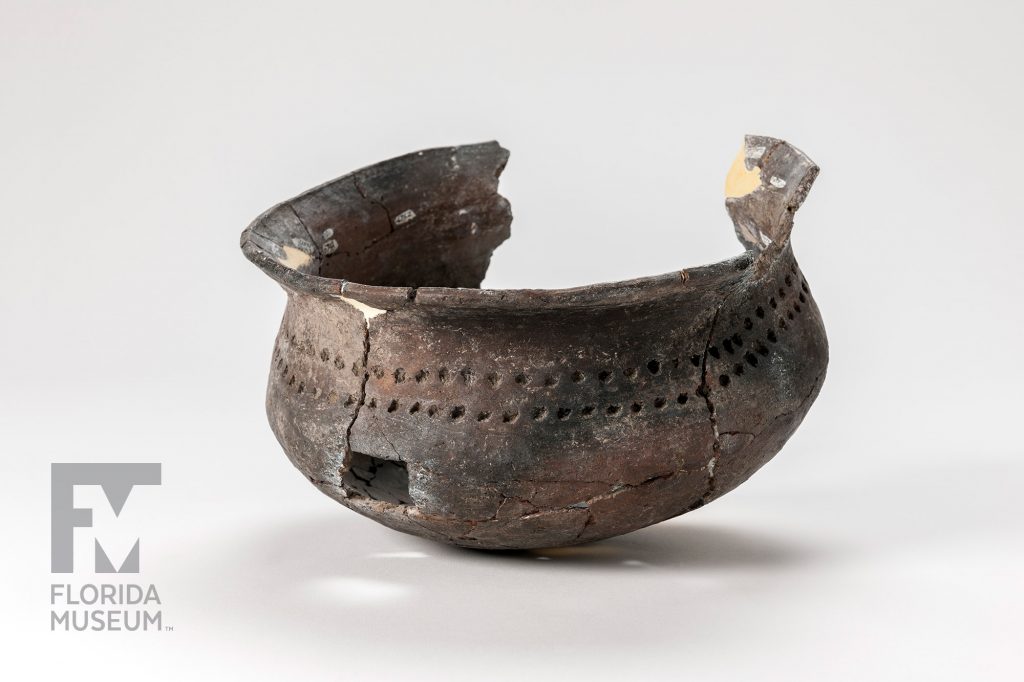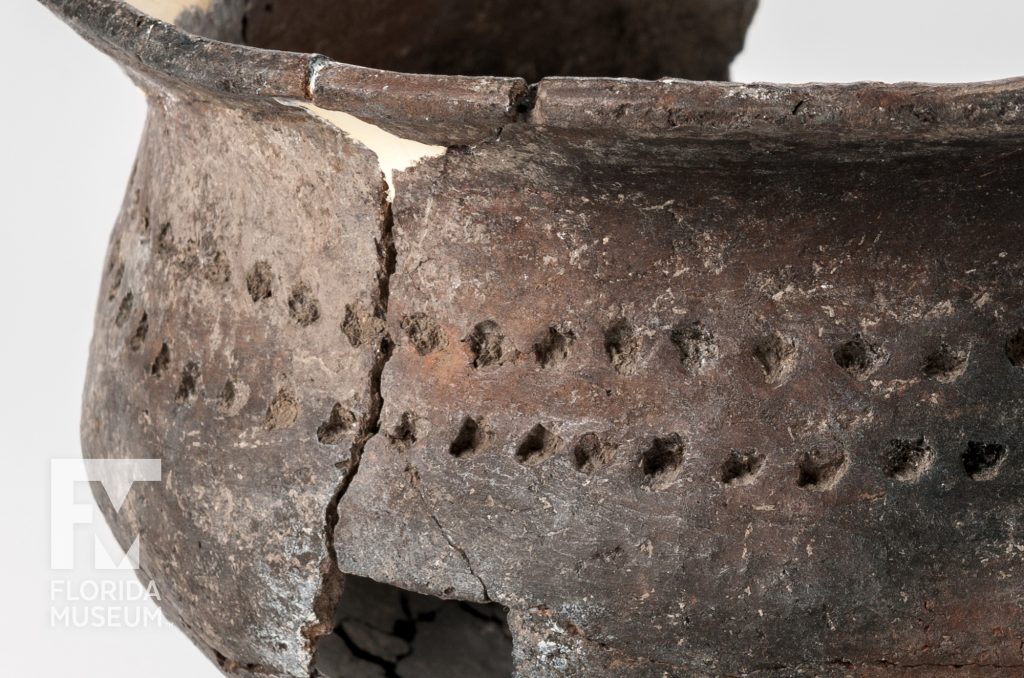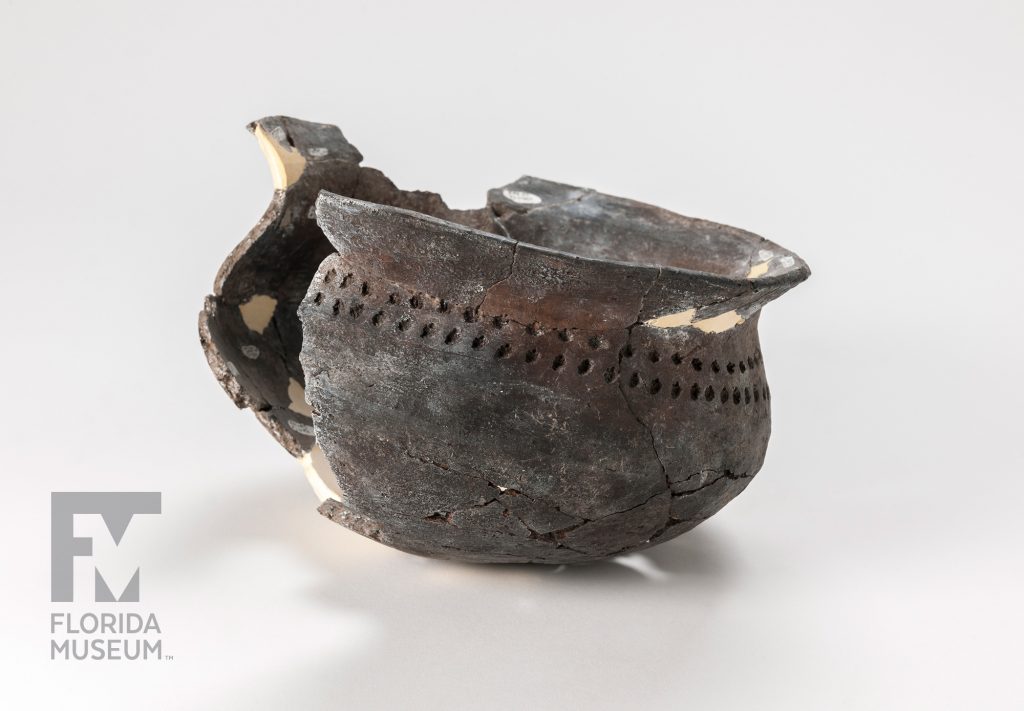Archaeologists and historians estimate that up to 100 million native people lived in the Americas before Europeans arrived. Taíno artifacts such as this bowl remind us that Christopher Columbus did not truly discover a “New World” in 1492.
Summary
Ceramic Vessel
Made by Taíno people, En Bas Saline, Haiti
Dates to AD 1200-1500
Collection
Story
This Taíno vessel was recovered from the site of En Bas Saline in Haiti. It’s a reminder that the New World Columbus discovered was already inhabited by people. Some archaeologists and historians estimate that up to 100 million native people lived in the Americas before Europeans arrived. This particular vessel was made by the Taíno people who occupied the island of Hispaniola and many of the Caribbean islands.
Gifford Waters
Collection Manager, Historical Archaeology*
Florida Museum of Natural History
Exhibit
On display Sept. 23, 2017-Jan. 7, 2018, Rare, Beautiful & Fascinating: 100 Years @FloridaMuseum celebrated the Museum’s rich history. Each Museum collection was asked to contribute its most interesting items and share the stories that make them special. Though the physical exhibit is closed, this companion website remains online, providing an opportunity to experience the Florida Museum’s most treasured specimens.
Exhibit Area: Objects Tell Stories
Theme: Spanish Colonial Archaeology
 Want to see more? Explore more than 300 breathtaking color photos of plants, animals, fossils and cultural heritage materials from the Florida Museum of Natural History’s collections in the award-winning book All Things Beautiful available from the University Press of Florida.
Want to see more? Explore more than 300 breathtaking color photos of plants, animals, fossils and cultural heritage materials from the Florida Museum of Natural History’s collections in the award-winning book All Things Beautiful available from the University Press of Florida.
*This title was accurate at the time the exhibit was on display in 2017. Please visit the collection website to verify current staff and student information.


